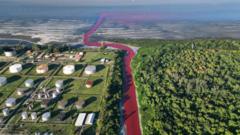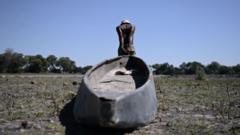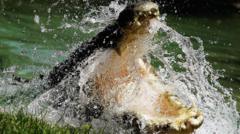In Nordelta, a wealthy area near Buenos Aires, the increasing population of capybaras has prompted residents to take measures such as sterilization. While these gentle rodents have gained popularity globally, their presence has ignited discussions on the balance between wildlife preservation and community living.**
Capybara Overpopulation Sparks Controversy in Argentina's Gated Community**

Capybara Overpopulation Sparks Controversy in Argentina's Gated Community**
Growing numbers of capybaras in Nordelta, Argentina, lead to debates over wildlife management and human-animal coexistence.**
In the exclusive gated community of Nordelta, located north of Buenos Aires, a peculiar dilemma is unfolding: the overpopulation of capybaras, the world’s largest rodents. While capybaras have captured the hearts of animal lovers around the globe, their increasing numbers have led some residents to question the sustainability of their presence within this affluent neighborhood.
The scenario often plays out like a scene from a nature documentary. Luciano Sampietro, a veterinarian, uses a blow dart containing a mix of sedatives to capture these hefty creatures. On one occasion, he targeted an alpha male and a pregnant female capybara. Unfortunately, the female's pregnancy was already advanced, prompting the need for immediate intervention to prevent further reproduction. This reflects a new reality for residents: active wildlife management strategies are being implemented, showcasing a binary perspective on the integration of natural and human habitats.
Capybaras, celebrated for their friendly demeanor and social behavior, have become Instagram darlings, amassing a significant following online. Videos depicting their relaxed nature have contributed to their popularity, resulting in the opening of capybara cafes in cities like Tokyo, where visitors can interact with these adorable rodents. However, the contextual shift from wild animals to urban dwellers experiences an inevitable friction when their thriving numbers encroach on human spaces.
The rise in capybara residents is partially attributed to the rapid development of Nordelta, which transformed vast wetlands into luxury housing and recreational facilities. As satellite images illustrate the transformation from natural habitat to golf courses and homes, the question arises: can the community find harmony in coexistence with the increasing capybara population?
Some residents celebrate the presence of capybaras as a charming aspect of rural life, while others grow concerned about the implications for local ecosystems and property values. The issue has generated discussions about wildlife conservation, urban planning, and community values, highlighting the complexities of modern living intertwined with nature in a changing world.
As locals continue to navigate their relationship with these lovable rodents, the ongoing situation in Nordelta serves as a microcosm of broader challenges facing communities worldwide where urban development intersects with wildlife preservation.



















